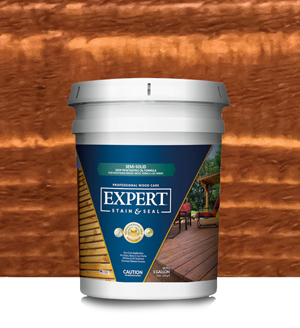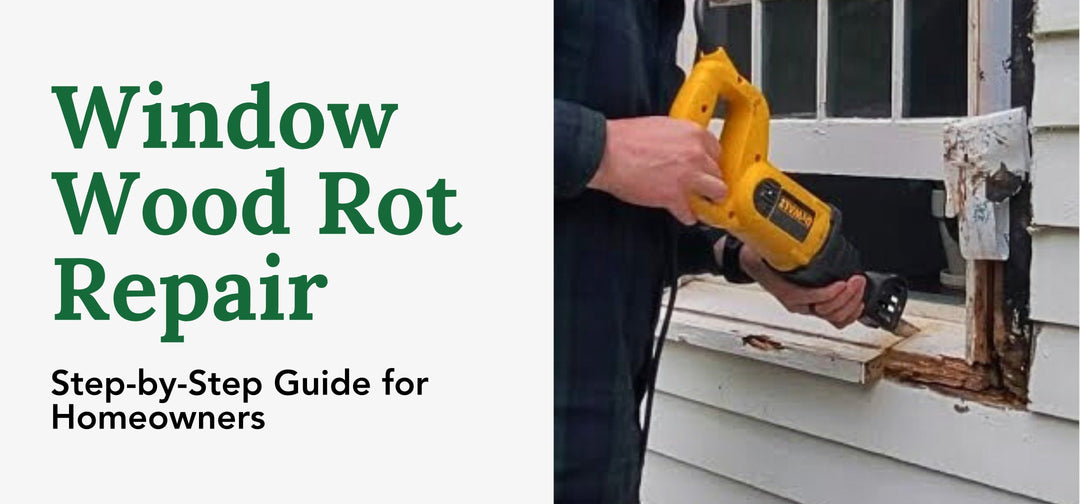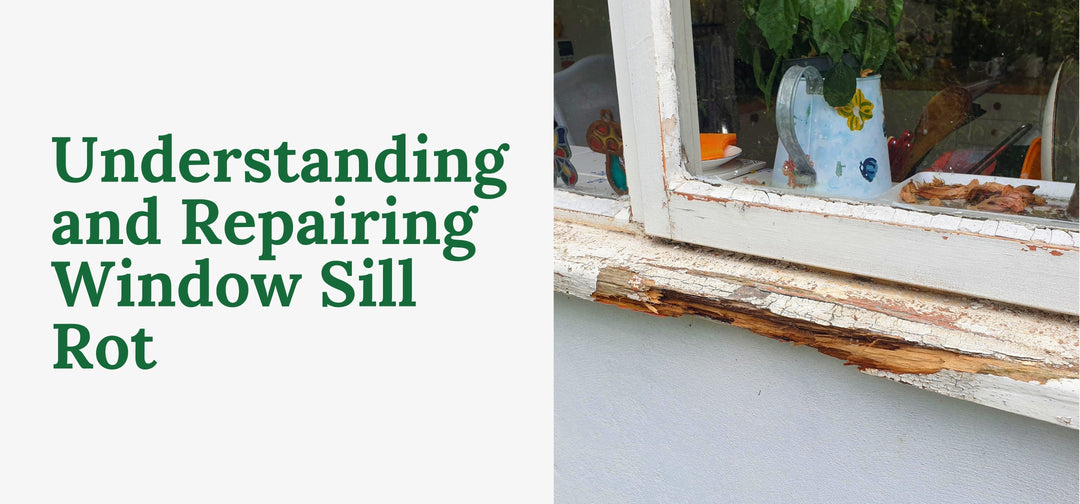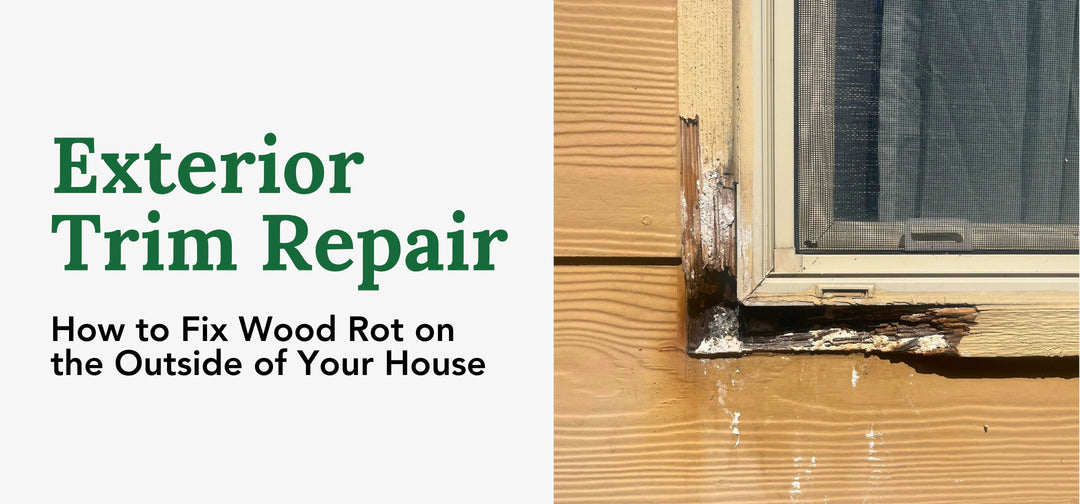Types of Fence Materials: Which One Is Best for You?
Choosing the right fence material is a crucial decision homeowners must make, as the material you choose affects not only your property's appearance but also your fencing’s durability, maintenance needs, and overall functionality.
Each fencing material has unique advantages and drawbacks, and finding the perfect fit will depend on your specific needs, budget, and environment.
Fence Armor provides protective solutions to help maintain and extend the life of your fence, no matter the material.
In this blog, we'll explore different types of fence materials, their pros and cons, and how to choose the best one for your property. Let's dive in.
Cedar Wood
Cedar is a popular choice for fencing, known for its natural beauty, durability, and aromatic qualities.
Choosing cedar as a material for your fence means investing in both aesthetics and functionality, making it a top choice for many homeowners.
NOTE: We offer all the fence tools you'd need to ensure proper wood care, such as stain machines and fence post pullers at Fence Armor.
Pros:
-
Natural Resistance to Decay and Insects: Cedar contains oils that naturally repel insects and resist rot, making it a long-lasting option for outdoor use.
-
Weather Durability: It holds up well in various climates without warping or cracking, maintaining its stability over time.
-
Distinctive Aroma and Appearance: Cedar's warm, rich color and pleasant scent add character to any property. It naturally repels wood-boring insects, minimizing the need for chemical treatments.
-
High Stability: Cedar maintains its shape, reducing the likelihood of warping or shrinking, which makes it a reliable option for long-term use.
-
Eco-Friendly: Its natural properties mean fewer chemical treatments, making cedar a safe and environmentally friendly choice.
Cons:
-
Maintenance Required: Cedar requires regular maintenance, including staining or sealing every three to five years to maintain its appearance and protective qualities.
-
Potential for Rot: Cedar can lose its natural resistance without proper care, leading to rot over time.
-
Higher Initial Cost: Cedar is more expensive than treated wood, which may be a concern for budget-conscious homeowners.
-
Color Fading: Cedar's beautiful reddish hue can fade to a silver-gray patina without proper sealing, which may appeal to only some homeowners.
Redwood and Teak
Redwood and Teak are often combined for premium fencing projects thanks to their complementary qualities and unmatched elegance.
Together, they provide a blend of visual appeal and exceptional durability.
Pros:
-
Natural Durability: Both woods resist rot, decay, and insects, making them ideal for long-lasting fencing.
-
Weather Resistance: Teak's natural oils and redwood's tannins protect against moisture and decay, even in wet climates.
-
Luxurious Appearance: The rich redwood hues and the teak's golden-brown tones add a sophisticated, eye-catching contrast that can enhance any property.
-
Ease of Customization: Redwood is easy to work with for custom designs, while teak offers added strength, allowing for unique, high-end fence styles.
Cons:
-
High Cost: Both are premium materials with a high price tag, making them less accessible for budget-conscious projects.
-
Maintenance Requirements: Redwood requires staining or sealing, while teak benefits from occasional oiling. Without this care, both woods may fade and lose their protective properties.
-
Environmental Considerations: These woods are often harvested from old-growth forests, so homeowners should consider sustainably sourced options to minimize environmental impact.
Vinyl
Vinyl fencing is a modern, versatile option made from durable PVC. Its popularity has grown thanks to its low maintenance, durability, customization options, and how long vinyl fences last.
Pros:
-
High Durability: Resistant to pests, rot, and moisture without needing staining or sealing.
-
Low Maintenance: Requires minimal upkeep—just occasional cleaning with soap and water, or more stringent cleaning options like bleach or white vinegar if necessary.
-
Variety of Styles: Available in different colors, designs, and textures to suit various architectural styles.
-
Weather Resistance: Can withstand harsh weather, including rain, snow, and UV rays. Plus, it's fire-resistant.
-
Eco-Friendly: Vinyl is recyclable and doesn’t need chemical treatments, making it an environmentally friendly choice when properly disposed of.
Cons:
-
Higher Initial Cost: Vinyl fencing has a higher upfront cost, though its low maintenance can make it more economical in the long term.
-
Potential for Brittleness in Cold: Vinyl can become brittle and crack in frigid temperatures, making it less suitable for harsh winter climates.
-
Discoloration Risk: Exposure to sunlight and dirt can cause discoloration over time, especially if not cleaned regularly.
-
Limited Repair Options: Damaged vinyl panels often require complete replacement rather than simple repair, which can increase maintenance costs.
Chain Link
Chain link fencing is a practical and budget-friendly option for those prioritizing security and functionality over aesthetics. It provides a durable boundary while maintaining visibility, making it suitable for a range of applications.
-
Cost-Effective: One of the most affordable fencing materials, ideal for budget-conscious homeowners.
-
Easy Installation: Relatively simple to install, making it a good option for DIY projects.
-
Low Maintenance: Requires little maintenance—just an occasional wash to remove dirt.
-
Durable: Resistant to weather conditions, with galvanized or coated options for added rust resistance.
-
Ideal for Security: Suitable for securing backyards or commercial properties without obstructing views.
-
Versatile Application: Can be used in residential yards, playgrounds, sports fields, and more.
Cons:
-
Lack of Privacy: The open weave design doesn’t provide privacy, which may be a drawback for some homeowners.
-
Industrial Appearance: Has a utilitarian look that may not suit those seeking a decorative fence.
-
Potential for Rust: In high-moisture areas, chain link can rust if not properly coated. However, galvanized or vinyl-coated options can help mitigate this issue.
-
Limited Aesthetic Options: Customization is limited compared to other materials, making it less appealing for enhancing property aesthetics.
Aluminum
Aluminum fencing is famous for its elegant appearance and practical benefits.
It offers a long-lasting solution without extensive upkeep. Its modern look adds a touch of sophistication, and its rust resistance makes it ideal for various climates.
Pros:
-
Rust Resistance: Naturally resistant to rust and corrosion, aluminum is ideal for wet climates or heavy rainfall areas.
-
Low Maintenance: Aluminum requires virtually no maintenance—no painting, staining, or sealing needed.
-
Lightweight and Easy Installation: This fencing material is lightweight, making sizing and installation a breeze. It an excellent choice for DIY projects.
-
Versatile Design Options: Available in many styles, colors, and heights, aluminum fencing can mimic more expensive materials like wrought iron.
-
Weather Durability: Withstands sun, rain, and snow without warping or cracking, ensuring long-term stability.
-
Eco-Friendly: Made from recyclable materials, aluminum is an environmentally conscious fencing choice.
Cons:
-
Lower Strength Compared to Steel: Aluminum is not as strong as steel, which may make it less suitable for high-security applications.
-
Susceptible to Dents: While durable, aluminum is more prone to denting compared to heavier metals like wrought iron.
-
Higher Initial Cost: It can be more expensive than wood or chain link, but aluminum’s low maintenance often balances this cost over time.
-
Limited Privacy: Typically designed with spaced pickets, aluminum fencing offers minimal privacy for homeowners looking for a complete visual barrier.
Wrought Iron
Wrought iron fencing is known for its classic elegance and formidable strength, making it a popular choice for homeowners seeking a sophisticated, secure fencing solution.
Pros:
-
Unmatched Strength: Wrought iron is one of the strongest fencing materials, offering excellent security and durability.
-
Timeless Aesthetic: Its intricate designs and elegant appearance provide a sophisticated, timeless look that can enhance curb appeal.
-
Customizable Design: Wrought iron is highly customizable, allowing for intricate patterns and unique touches that give your property a personalized look.
-
Wind Resistance: The open design allows wind to pass through, making it a good option for areas with high winds.
Cons:
-
High Maintenance: Wrought iron requires regular maintenance, such as painting or rust protection, to prevent corrosion and maintain its appearance.
-
Expensive: It's one of the most costly fencing materials for initial investment and ongoing maintenance, which means it may only suit some budgets.
-
Vulnerability to Rust: Wrought iron can rust without proper care, especially in humid or rainy climates.
-
Limited Privacy: The decorative, open design provides little privacy, which may be a drawback for some homeowners.
Bamboo
Bamboo fencing is an eco-friendly and attractive choice. It is often used to create a natural, tropical aesthetic that is appealing to homeowners looking for a sustainable and unique fencing material.
Pros:
-
Eco-Friendly: Bamboo is a highly renewable resource that grows quickly, making it an environmentally friendly fencing option.
-
Distinctive Appearance: Bamboo’s natural texture and color provide a unique, tropical look that enhances the visual appeal of outdoor spaces.
-
Lightweight and Easy to Install: Bamboo is relatively lightweight, making installation easier than that of heavier fencing materials.
-
Versatile Design: Bamboo can be used in various ways, from privacy screens to decorative garden accents, adding flexibility in application.
Cons:
-
Lower Durability: Bamboo is less durable than other fencing materials and can degrade faster without proper maintenance.
-
Susceptibility to Moisture and Pests: Bamboo is vulnerable to moisture, which can lead to rot and pests if not properly treated. Regular sealing is essential to prevent damage.
-
Maintenance Needs: Bamboo requires regular sealing and inspections to protect against environmental damage and maintain its appearance and durability.
-
Limited Strength: Bamboo is not as strong as materials like wood or metal, making it less ideal for security-focused applications.
Composite
Composite fencing is a modern, low-maintenance option made from wood fibers and recycled plastic.
It provides the natural appearance of wood with added durability, making it a popular choice for those looking to balance aesthetics and practicality.
Pros:
-
Natural Wood Look: Composite fencing mimics the look of wood, offering a warm, natural appearance without the need for extensive upkeep.
-
Low Maintenance: Unlike traditional wood, composite does not require staining, painting, or sealing—just occasional cleaning to keep it looking its best.
-
Durability: Composite fencing is highly resistant to rot, pests, and weather damage. It won’t warp, crack, or splinter, providing long-term performance with minimal maintenance.
-
Eco-Friendly: Made from recycled wood and plastic, composite fencing is a sustainable choice for homeowners who want an environmentally conscious fencing option.
-
Variety of Colors and Styles: Composite fencing comes in different colors and styles, providing versatility to match any property’s aesthetic.
Cons:
-
Higher Initial Cost: Composite fencing tends to be more expensive upfront than wood, but its durability and low maintenance can make it more cost-effective.
-
Fading Over Time: While composite is resistant to many types of damage, prolonged exposure to sunlight can cause some fading. This gradual color change may appeal to some, but not all.
-
Temperature Sensitivity: Composite can expand or contract slightly with temperature changes, which may require careful installation to prevent gaps or warping.
- Susceptible to Trimmer Damage: While composite fencing is well-suited to deal with rot and posts, it does not do as well against gardening tools used in consistent maintenance.
Treated Wood
Treated wood is a suitable option for homeowners wanting an affordable and durable fencing solution that provides extra protection against the elements.
Pros:
-
Enhanced Durability: Treated wood is chemically treated to resist rot, insects, and decay, making it more resilient than untreated wood.
-
Affordability: Treated wood is typically more affordable than premium options like cedar or redwood, making it a cost-effective choice for budget-conscious homeowners.
-
Versatility: Treated wood can be used in various fencing styles and designs, allowing homeowners to achieve the desired look for their property.
-
Longer Lifespan: The treatment process extends the lifespan of the wood, providing a fencing solution that can withstand the elements for years.
Cons:
-
Regular Maintenance: Treated wood requires ongoing maintenance, such as staining or painting, to maintain its appearance and protective qualities. Without regular upkeep, the wood can become vulnerable to moisture and UV damage.
-
Less Natural Appearance: The treatment process can give treated wood a less natural appearance than high-end woods like cedar or teak, which may not appeal to homeowners seeking a refined look.
-
Chemical Treatment Concerns: Some homeowners may have concerns about the chemicals used in the treatment process. While these chemicals enhance durability, they may limit the use of treated wood for specific applications, such as garden beds.
How to Choose the Best Fence Material for Your Property
The best fence material for your property will depend on your needs, preferences, and budget. Here are some factors to consider:
1. Determine Your Goals
Understanding your primary goal for building a fence will help you decide on the best material:
-
Security: For security, wrought iron and chain link are among the best options. Wrought iron combines elegance with high strength, while chain link is cost-effective and can be enhanced with privacy slats.
-
Aesthetics: If aesthetics are your top priority, cedar, redwood, and teak are excellent choices. These natural woods provide a visually appealing, high-quality look that enhances curb appeal. Composite fencing is another great option for homeowners who desire the appearance of wood but want less maintenance.
-
Low Maintenance: If you want a fence that requires minimal upkeep, choose vinyl or aluminum. Vinyl is resistant to rot, pests, and fading, while aluminum is lightweight, rust-resistant, and easy to maintain.
2. Consider Your Local Climate
The local climate can greatly impact the performance and longevity of your fence. Here are some considerations to keep in mind.
-
Wet Climates: In moist climates, aluminum and vinyl are ideal choices, as they are resistant to rust and moisture damage. Wood may require extra maintenance to prevent rot and decay.
-
Hot and Dry Climates: Cedar and redwood are well-suited to hot climates but will need regular staining to prevent drying out. Vinyl is also a good option, although it may expand or warp in extreme heat.
-
Cold Climates: Thanks to their strength and durability, wrought iron and treated wood are well-suited for colder climates. That said, be cautious with vinyl. It may become brittle and crack in freezing temperatures.
3. Understand Maintenance Needs
Each fencing material has different maintenance requirements, and understanding these needs will help you make an informed purchase decision:
-
Wood: Materials like cedar, redwood, and teak need regular fence staining and sealing to maintain their appearance and prevent rot. Without proper care, wood can decay or attract insects.
-
Vinyl: Vinyl fencing is low maintenance, requiring only periodic cleaning to remove dirt and prevent discoloration. It doesn’t need painting or sealing, making it ideal for homeowners seeking ease of care.
-
Aluminum and Wrought Iron: Aluminum is virtually maintenance-free, while wrought iron requires occasional painting to prevent rust and keep its elegant appearance intact.
-
Composite: Composite fencing requires less maintenance than wood, as it does not need staining or sealing. However, occasional cleaning is recommended to prevent mold or mildew buildup.
By following these steps, you can choose the best fencing material that aligns with your goals, climate, and budget.
Protect Your Fence Investment with Fence Armor
No matter which type of fence you choose, Fence Armor offers post guards and post caps that help keep your fence in great condition.
Investing in Fence Armor products can help extend the lifespan of your fence, reduce maintenance costs, and ensure that your fence remains beautiful and functional for years to come.
Check out our store today to explore our range of products and ensure your fence stays in top shape for years to come.
Frequently Asked Questions (FAQs)
We answer common questions about the various types of fence materials below.
Can I Use Barbed Wire as a Fence Material?
Barbed wire can be used as a fence material but is generally reserved for agricultural or security purposes. It is not commonly used or allowed for residential properties due to safety concerns, as the sharp barbs can cause injury.
What Type of Fence Material Is Good for Small Homes?
For small homes, vinyl and treated wood are both excellent choices.
Vinyl provides a clean, modern look with minimal maintenance, making it ideal for homeowners who want an easy-care option. Treated wood is also a good choice for small properties thanks to its affordability and versatility in design.
Both materials can create attractive fences that enhance the overall appearance of smaller homes without overwhelming the space.
What Is the Cheapest Style Fence to Build?
Chain link fencing is generally the most affordable style of fence to build. It is cost-effective, easy to install, and requires minimal maintenance, making it an excellent choice for budget-conscious homeowners.
Treated wood is another economical option, especially if you want a more traditional appearance. Both materials offer durability at a lower cost compared to other fencing types.
Key Takeaways on Types of Fence Materials
Choosing the right fence material is a must for balancing functionality, durability, and visual appeal.
Ultimately, your choice should be guided by your specific goals, climate, and budget. No matter which material you choose, using quality products like those offered by Fence Armor can extend the lifespan of your fence and keep it looking its best for years to come.
Explore our range of tools and protective solutions today to ensure your fence stands strong and beautiful.
Here are some more Fence Armor products and collections you can check out:
Post Rot Protector | Post Saver Sleeve | Speed Square | Mr Fence Tools | Semi Transparent Stain | Chain Link Fence Bottom Guard | Stain Stripper | Fence Guard | Mr Fence Protector | Expert Stain and Seal | Fence Post Sleeve | Decorative Fence Post Caps | 4x4 Post Protector | Fence Finials | Framing Jig | Vinyl Fence Rail Removal Tool | 4x4 Deck Post Anchors | Fence Protector | Aluminum Balusters | Mailbox Post Protector | Fence Hangers | EZ Template | Baluster Connectors | Semi Solid Deck Stain | Fence Guard | Fence Post Protector | Post Protector 4x4 | Post Preserver | Metal Fence Trim | Fence Buddy | Post Skirt
















